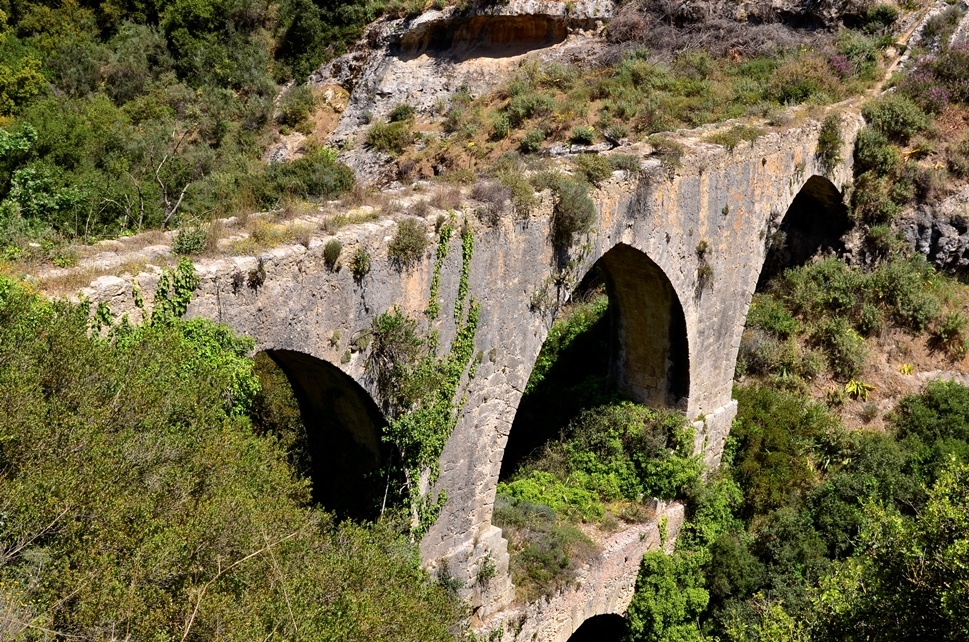
Heraklion had always had a water shortage problem and that’s why, in 1627, the Venetian Francesco Morosini decided on a public project that would resolve the issue once and for all. He had an aqueduct constructed, where the waters from three springs, of Archanes: Pelekita, Agiou Georgiou and Karydaki, were collected (during the Ottoman occupation period, waters from more springs were channelled into the aqueduct). The stone pipe was 15km long and led the water, through Syllamos and Fortetsa, to the central square of Chandax (present-day Heraklion), to the Four Lions Fountain. At Karydaki location in Archanes Gorge, there is an aqueduct standing in good condition; it is around 65m long, with one large arch and two smaller ones. On the bridge there is a sign in Latin, indicating the year 1627. The aqueduct of Morosini was inaugurated in 1628, on the day of St. Mark’s feast, the patron saint of Venice, at the Lions Square.
In fact, Morosini had a commemorative medallion cut: on one side there was Zeus and on the other an eagle, pouring water from Mt. Juktas. Around the perimeter of the medallion there was the inscription “Quadet feumine non fulmine”, which means “Happy with the water not the thunder”.
In order to ensure its safe operation, the Venetian ruler ordered that anyone who damaged the aqueduct should be severely punished (imprisonment, forced labour, exile, confiscation of property); furthermore, it was forbidden to plant trees within a radius of 10 steps on either side of the pipe. He also ordered that Panagia Kardiotissa Convent should be vacated, because he was afraid of sabotage.
The chapel of Panagia (Virgin Mary) is still preserved to date near the canal-carrying aqueduct
Morosini’s aqueduct is probably one of the best and most beautiful water supply projects from the era of Venetian rule and relieved residents of Venetian Chandax from long water shortage periods. The aqueduct is around 15km long, starting from the northern foot of Mt. Juktas and ending at the eight-lobe fountain of Morosini, popularly known as ‘the Lions’ (in the city of Heraklion, Venetian Chandax). The aqueduct was standing almost in its entirety, along with later modifications and additions, until the Second World War. Heraklion received its water supply from Morosini’s aquaduct until 1927!
The route
If you are coming from Heraklion, continue on the way to Syllamos and then towards Karydaki and Archanes. After you come to the riverbed at Syllamos, the road goes uphill to Karydaki district (there is no village); in a chasm with steep banks, on the right, there is the second part of the Venetian aqueduct.
The impressive bridge is not visible from the road, but you can see it on the left, from the side of the road. There is a footpath going downhill, backtracking for about 50m, after the road bend (at the next bend there is a small stretch



